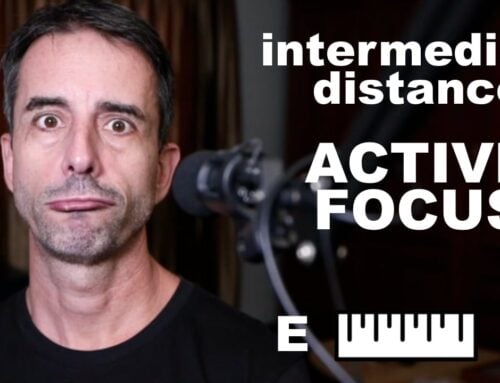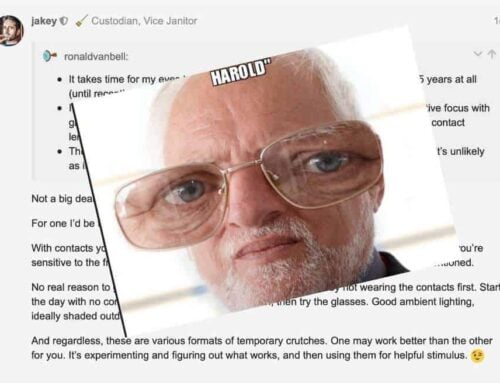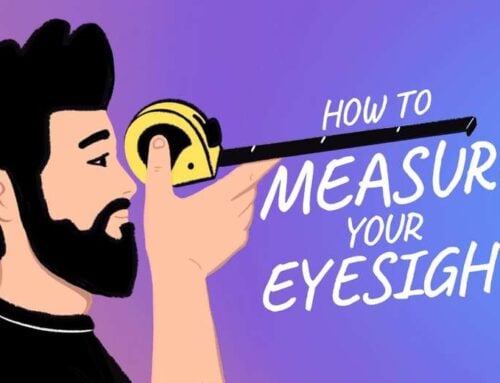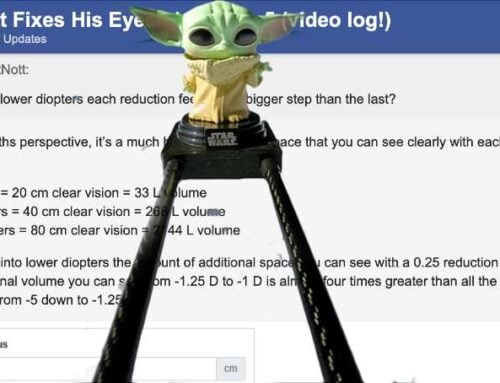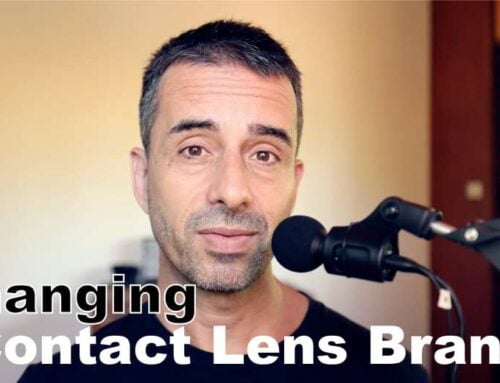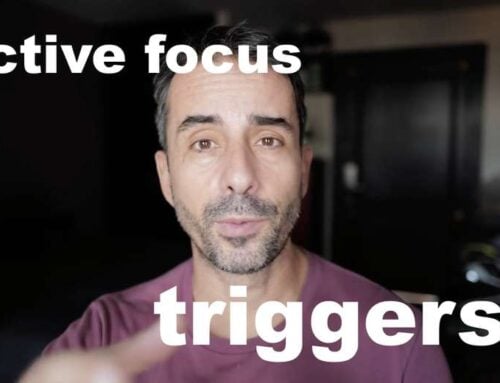There is a whole discussion going on here, about why you might see better with contact lenses than you do with glasses.
Short answer, if you have high myopia, and don’t have any problems with dry eyes, contact lenses might be for you. The rest of this is for those of you who are already in the whole program and familiar with normalized and differential prescriptions.
Let’s address the contact lens vs. glasses vision question for close-up. Here’s what I posted in the forum:
1. There could be a prescription difference (astigmatism, or left vs right eye).
2. Lens quality. -7.5 is a lot of diopters, and it really makes a difference what type of lens (and quality) you are wearing at this level.
3. Lens size. Thick rims, relatively small lens, less light, less peripheral vision. This can have a significant effect.
4. Peripheral vision part 2. Related to #3, the more complete your field of vision, the better your eyesight.
Sometimes contact lenses can have a higher actual prescription than stated. I don’t know how common this is anymore, but back when I tested over 80 different options, a surprising number were skewed towards higher correction.”
—
The conversation moves on from there, asking about the best way to do close-up and distance vision. Of course you never want to wear your contact lenses for close-up, at least not with a diopter or two “buffer” to reduce that giant focal plane change.
Alex and Neha suggest that you stick with glasses (for most cases) and just wear what you need for any given distance.
I added a bit more to that perspective in the thread. Excerpt:
![]() It’s a tradeoff, with the contact lenses.
It’s a tradeoff, with the contact lenses.
Alex and Neha are against them because:
a) They tend to make your eyes more dry which messes with the focal plane to some degree. You probably noticed when you have dry eyes, your vision isn’t quite as good.
and
b) They increase the likelihood that you won’t get into good habits. You have them in, you just forget about the plus, etc etc.
Neha and Alex like the old school ways.
Here’s my take:
You have to spend a boatload of money to get lenses that have decent optical quality at -7 and higher. A contact lens is much more economical. Optical quality is super key, since having a good image really affects your mental wellbeing as well (-7 makes an overly bright, “squeezed” image, especially with a mid index polycarbonate. quite unnatural).
And you don’t have a lot of fashion choices. As mentioned above, you want as much lens coverage as possible, and as little of a frame border as possible. Ideally that’s kind of a large, rimless setup. You might not feel at your most sexiest with those. 😉
So you can just get contact lenses, and be really serious about never having that full minus when doing close-up. A good quality plus lens would make sense too, not the three dollar Chinese ones they sell at the convenience store. Those are fine to figure out where you are comfortable, wear a few days, experiment. But for lots of hours of close-up … do your eyes a favor and grab a good quality plus lens.
Budget friendly is also the fact that you won’t ever have to change that version of the differential prescription. You just figure out how much plus works with your contact lenses and ergonomic distance, and that’ll always stay the same (more or less). So if you turn out to be happy with a +1.75, you keep that and just reduce the contacts prescription as you go along.
Another insider tip here, CR39 lenses are much, much cheaper than poly, and they have way better optical quality. At less than two diopters they might be a good choice.
I’m a major stickler for optical quality. Nothing will mess up your head more than crappy lenses (over time), so a little investigating is well worth it (or just ask me).”
—
These are the sort of things that go way over the head of 99% of optometrists. Not to mention that it’s against all the rules, which tell them to just sell you one prescription, for as much correction as you can possibly stand.
Silly birds.
The whole thread is here.
Cheers,
– Jake Steiner






